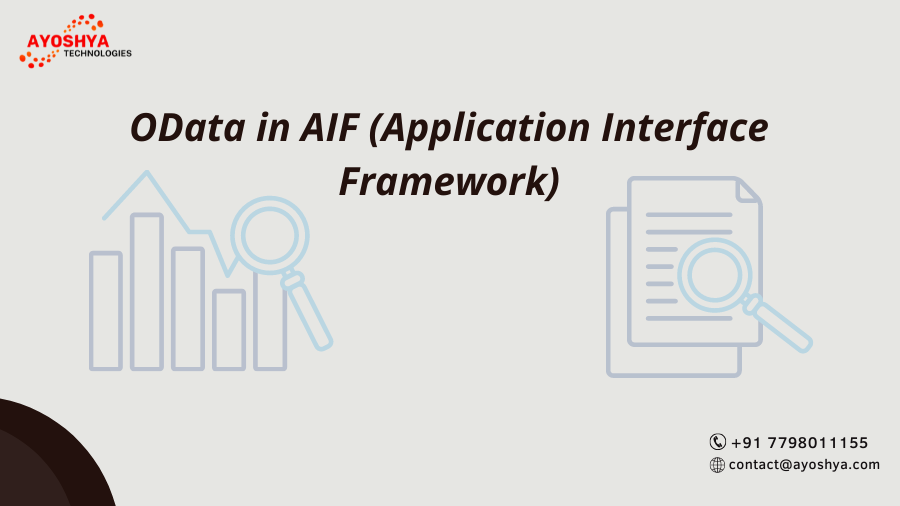OData in AIF
What is Odata
OData is a REST-based protocol for querying and updating data. It is built on technologies like HTTP, ATOM/XML, and JSON. It is more flexible than other REST-based web services and provides a uniform way to describe the data and the data model for easy interoperability between data sources, applications, services, and clients. Similar to ODBC and JDBC, OData gives you a single way of accessing various data sources. OData in AIF.
OData in AIF (Application Interface Framework)
The SAP Application Interface Framework enables you to develop and monitor interfaces as well as execute error handling in a single framework residing in your SAP back-end system. OData in AIF.
It enables you to monitor interfaces across technologies centrally and configure alerts for the errors, mass error handling, and most importantly, empower business users. If any errors are business-related and non-technical, your business user can fix the error without involving IT. Moreover, you can develop small configurable components that can be reused across different interfaces and technologies. This can save you a lot of time if you have similar scenarios across multiple interfaces; which helps in a multi-technology framework. OData in AIF.
This blog will be focused on the configuration of the SAP Application Interface Framework to support the monitoring of error messages for OData services. For erroneous data messages, you can display the error messages and the content of the data message in the source format. Correcting the contents of the data messages, restarting, or canceling data messages of the OData service using the SAP Application Interface Framework is not yet supported.
This blog will share step-by-step documentation on activating/integrating Odata messages in AIF.
Pre-requisite:
1. You must be on the S4 Hana system
2. Have an AIF License for custom creation
Assumption:
- You already have a namespace and an interface created. If note, please follow the below steps:
- Creation of Namespace:
- Navigate to IMG activity SAP Application Interface Framework Interface Development Define Namespace.
- Change from display to edit mode.
- Choose New Entries and create a new entry (enter a name and description).
- Save the new entry.
- Creation of Interface:
- Navigate to IMG activity SAP Application Interface Framework Interface Development Define Interfaces.
- Enter the name of the AIF namespace created before.
- Create a new entry. Specify the parameters for interface development.
- Save the AIF interface.
- Creation of Namespace:
- You already have an Odata Service created. OData in AIF.
Step 01: Create an interface with a raw structure
- Create a RAW structure to get the data from Odata into AIF
Go to Tcode SE11 -> Create a structure – ZAIF_ODATA_ROOT_STRUC, which will at least have a component of type /AIF/ODATA_STD_RAW_FLDS_S and a table type that will contain Odata structure. - Create an interface
Go to Tcode /AIF/CUST -> Interface Development -> Define Interface

Step02: For the OData interface, specify the interface engines as below:

Step 3: Specify the OData services and elements, for example, entity sets, whose error logs you want to monitor using this interface. the services in Customizing of SAP Application Interface Framework under
Interface Development -> Additional Interface Properties -> Define OData Services .

Step 4: Define a message index table that at least includes the structure /AIF/ODATA_STD_IDX_FLDS_S. For an example of such an index table, see the template table /AIF/T_ODATA_IDX.
Add your index table to the OData interface in Customizing of SAP Application Interface Framework, under Error Handling Define Namespace-specific Features Define Interface-specific Features Message Idx Table.

Step 5: To receive up-to-date error logs of OData services in SAP Application Interface Framework, select the services in the program /AIF/ODATA_TRANSFER_JOB and schedule the program to run periodically. You can look up the available oData services in transaction /IWFND/MAINT_SERVICE.


Step 6: Check the AIF error log for message code /AIF/ERR

To conclude, AIF helps bring out different interfaces into one platform and helps save effort & time in error handling and monitoring of errors. Credit: Priya Asphlani



